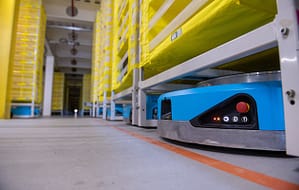When comparing the properties of metals for investment casting, the best material is a high melting point alloy. It can produce parts with complex geometry. Most of the metals used for investment casting are softer than steel and can withstand extremely high temperatures. This method can be adapted for a wide variety of applications, including high-temperature components. The benefits of investing in a specific metal alloy are numerous. Here are some advantages of investing in a high melting point alloy.
Optimal alloy composition
Investment casting is a process that improves the properties of metal in a wide variety of ways. It is also flexible, enabling its users to make higher precision metal parts than ever before. The process can be simplified by eliminating the need for tooling and reducing production time. Modern investment casting processes can make modest volumes of casted components in as little as twenty-four hours. And because they are so flexible, manufacturers can reduce tooling costs.
Optimal shrinkage
The shrinkage rate of an investment casting product is not fixed. It varies according to the operations performed on it. Depending on the size and complexity of the product, the shrinkage rate may vary dramatically. It is essential to avoid unreasonable processes to prevent any deviation in the dimension accuracy of precision investment castings. The shrinkage rate is affected by the structure of the casting. Hence, the wall thickness of a product with a large free systolic rate can result in small block-sized shrinkage rates.
Carbon steel
Carbon steel is known for its ability to operate under high-pressure conditions. It is also resistant to wear and is also very tough. Its properties are determined by the carbon content. During the process of heat treatment, carbon steel develops a greater hardness. Mid-carbon steel is characterised by ductility, strength, and wear resistance. Low-carbon steel is soft and does not undergo heat treatment.
Ferrous and non-ferrous metals
All metals can be shaped using investment casting. Ferrous metals include ductile iron, carbon steels, and selected grades of stainless steel. Non-ferrous materials, such as aluminium, are not porous and have high density. They are also extremely light. The process of investment casting has numerous advantages. All metals are suited for different applications. Aside from low density, these materials can be shaped into any shape you desire.
While many other metals can be used for investment casting, aluminium is the most common and most popular. Aluminium is an abundant element of the earth’s crust and is lightweight and conductive. These attributes make aluminium a great material for investment casting. The process is also durable and highly reflective. For this reason, aluminium is a very popular metal for investment casting. It is also widely used for construction. The metals used for this process are very useful for design engineers.
Process of production
Investment casting is an efficient process for producing high-quality parts. It is an environmentally friendly and cost-efficient method of production, which is especially important if you need to manufacture many identical parts for multiple purposes. If you want to increase the life of an investment cast, you can reuse the old one. Further, it will increase the lifespan of your product and be more durable. In addition, it will save you money by reducing the cost of production and maintenance.
Investment casting can be done in a variety of different metal alloys. The most common of these are aluminium and zinc alloys. The most common ones include magnesium and copper. Other materials that can be used for investment casting are carbon steel, stainless steel, tool steels, and even nickel and cobalt alloys. Regardless of the material, the process is still relatively inexpensive, but it is more costly than other processes. Some of the most popular types of metals for investment casting are not only inexpensive but also durable.
Investment casting uses a refractory shell, which makes it possible to use almost any type of metal for casting. The process can also be done with any type of metal. The most common is aluminium. This is an ideal material for the automotive industry. In addition, it can be used to manufacture other types of aluminium, such as car and truck components. Another great feature of investment casting is that it is more cost-effective than other metal alloys.






Leave a Comment